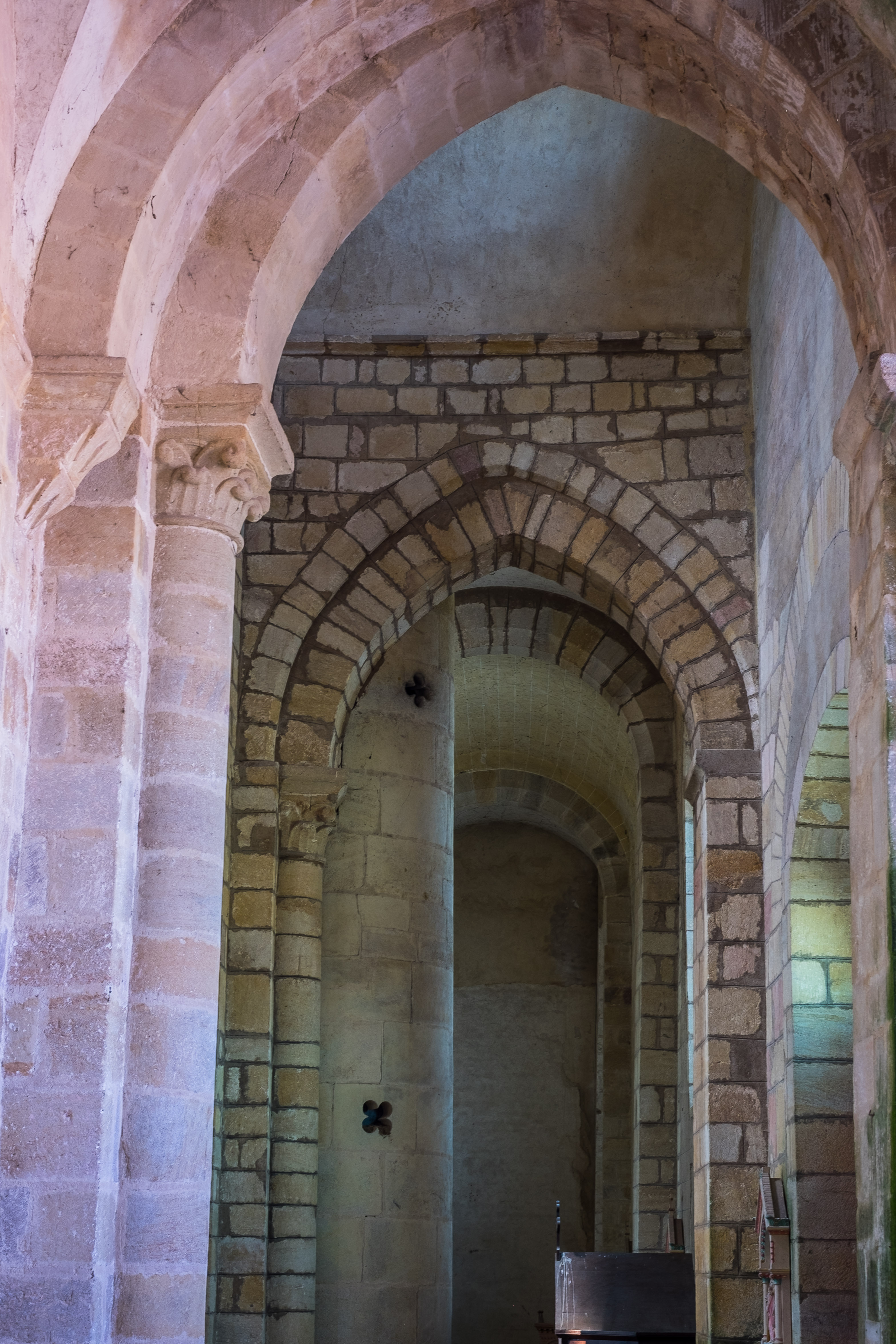The sound of history repeating
Karen and I will see Hamilton when we get to London in a couple of weeks, so I’ve been reading the Ron Chernow biography of Alexander Hamilton that inspired the hit musical. Among many new discoveries, it’s reminded me over and over again that nothing in history is ever really new or original. Think the idea of “fake news” is something modern? Thomas Jefferson said of the press in early America, “nothing can now be believed which is seen in a newspaper.”
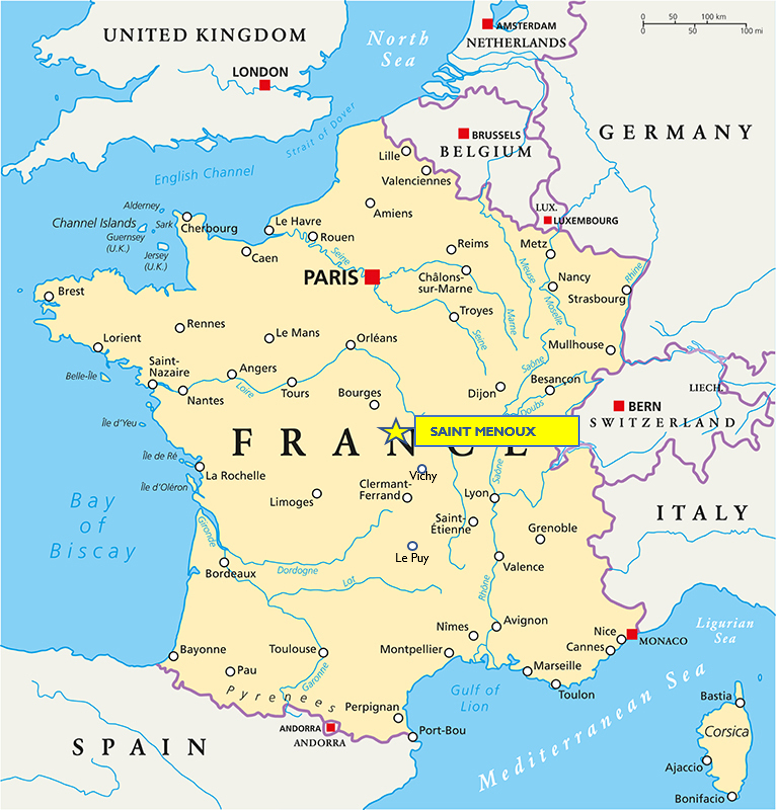
And if you're distressed by the crassness of public discourse in the age of Twitter, you might find some comfort in knowing our forefathers routinely engaged in the kind of invective that would make a Russian bot blush. (John Adams once called Thomas Paine "a mongrel between pig and puppy, begotten by a wild boar on a butch wolf"!)
The certainty that human nature hasn’t really changed that much over the centuries despite all our progress in technology and philosophy came to mind again as I reflected on one of my favorite trips in the deep heart of France of the last two years -- to Saint Menoux.
"Débredinoire" - a new word for my French vocabulary
It’s worth going to Saint Menoux just for its fine Romanesque church. In fact, there’s not much more to see in this bright little hilltop village near Moulins in the Allier département.
But my curiosity was heightened as I drove west on the D945 on a brilliant sunny morning in September. As in so many places around France, there are big brown road signs signaling the attractions you can see in the area around you. These are usually straightforward: “Château de Billy,” for example, or “Forêt de Tronçais”.
The sign for Saint Menoux was a puzzle, though. Featuring a line drawing of something that looks like a coffin, it says (with no other explanation) “Saint Menoux et son débredinoire”.

Not a word I’d ever heard before, so when I stopped for a break I pulled out my phone – but “débredinoire” is not one of the entries in my Larousse dictionary app. A quick trip to Google.fr took me back full circle – a “débredinoire” is “that thing you’ll find in the church at Saint Menoux”!
So by the time the village came into view, my curiosity was fully engaged.
There’s even confusion in French about whether the thing is masculine (“le débredinoir”) or feminine (“la débredinoire”). I’ve stuck to the feminine version since that’s what all the local signage calls it.
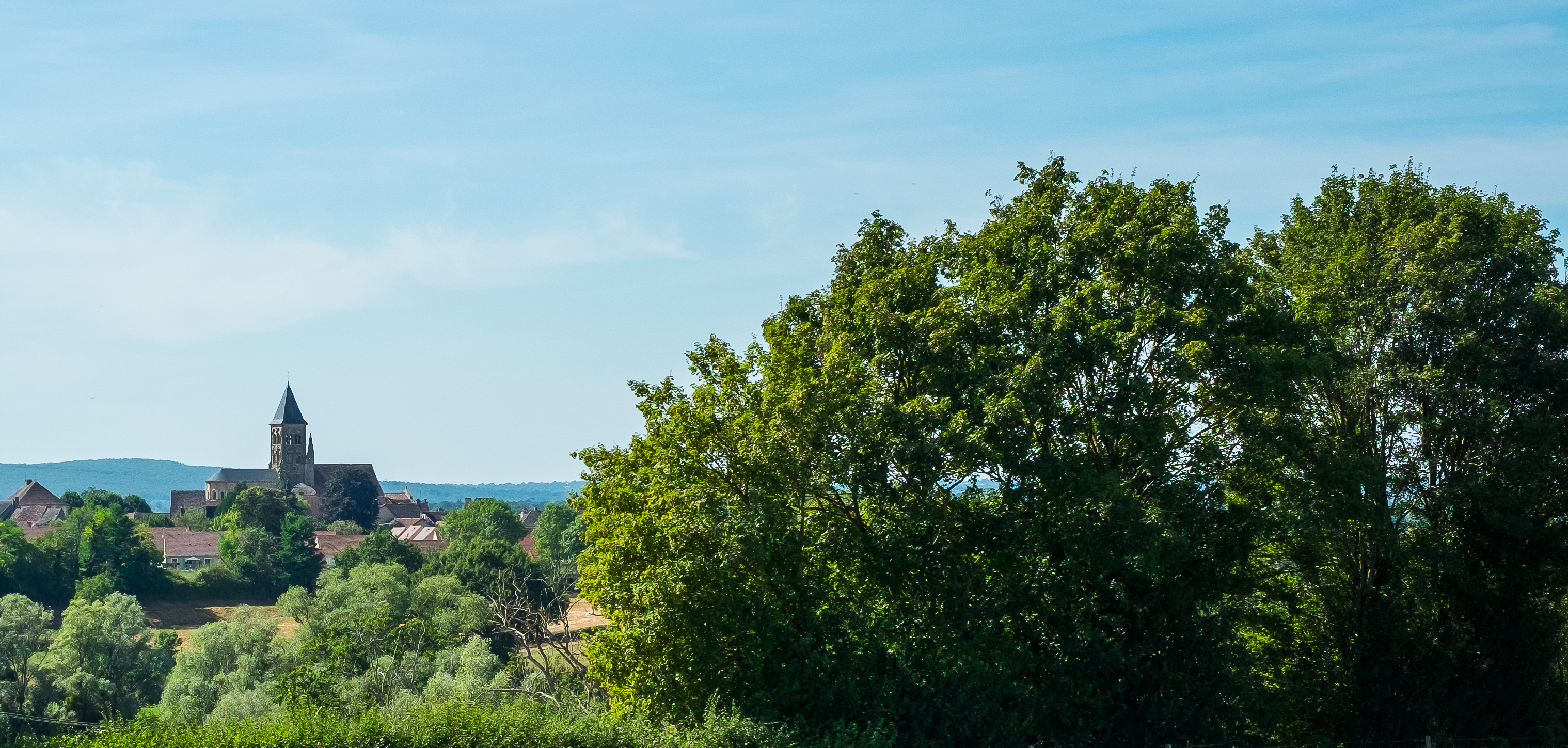
An Irish pilgrim in the deep heart of France
The church is visible from miles away, and although it is much smaller than the great Romanesque basilicas at Brioude, Saint Nectaire, or Clermont-Ferrand, it is an incredibly beautiful gem in its own right.
Built in the 12th century, it honors the bishop Menulphus. He was on his way from Ireland on a pilgrimage to Rome in the 7th century but died in this little village along the way. Miracles were reported by those who encountered his relics – and particularly those who suffered from headaches and nervous breakdowns. As his legend spread, a massive abbey was built on the site, surrounding the church itself with Gothic cloisters, agricultural buildings, chapels, and all the infrastructure needed to welcome the pilgrims who came to see the relics of Menulphus.
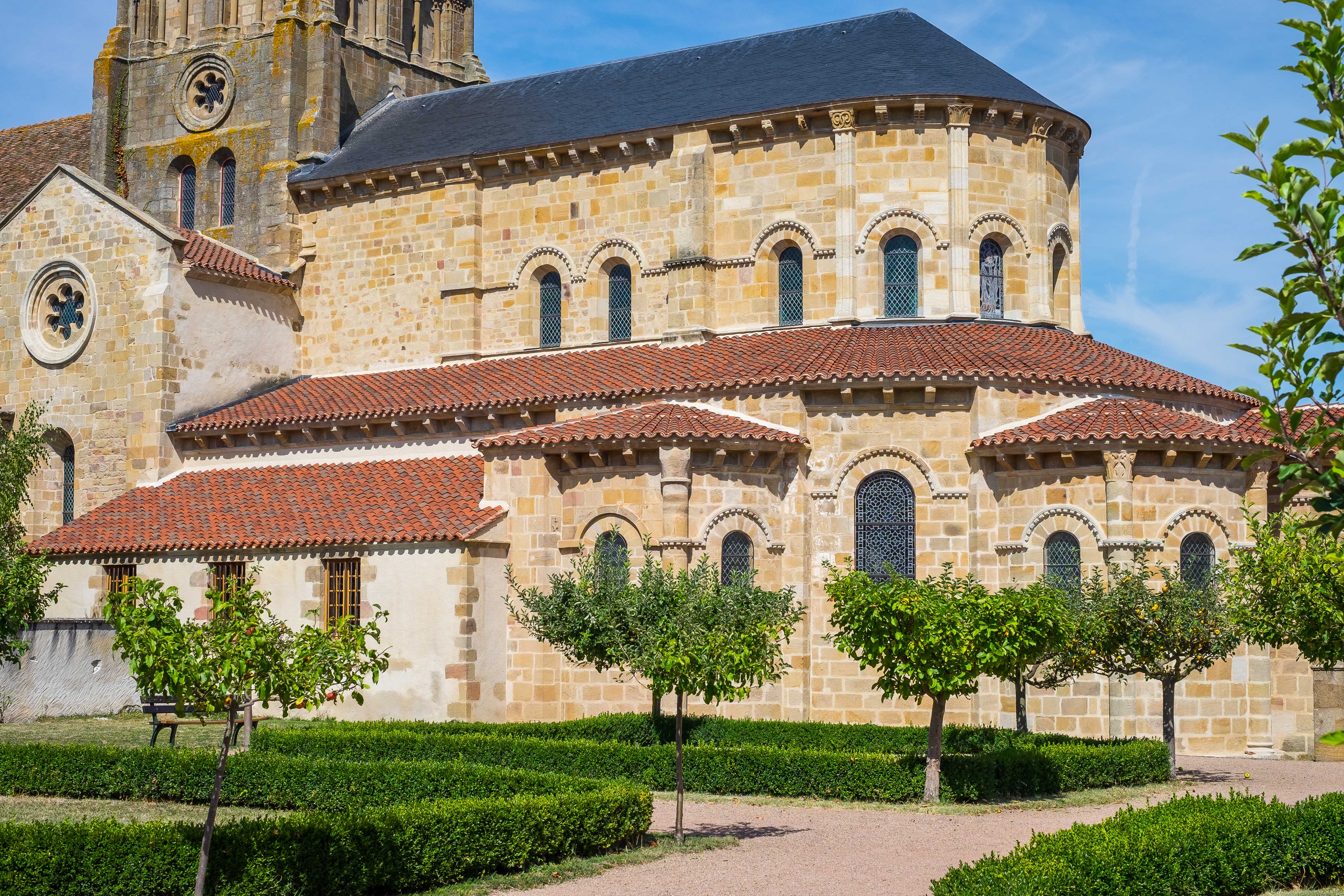
Only the church remains. During the French Revolution, the local priest turned radically against his religion and took the initiative to tear down everything else – the dormitories, the kitchens, the cloisters and chapels, all of it. It’s perhaps one of Menulphus’s principal miracles that the church itself escaped the curé’s destructive rampage.
A jewel of Romanesque art and architecture
What a beautiful church it is, though! When I was there, apples hung heavily from dozens of trees in the courtyard. Against the intensely blue sky, all of the Romanesque elements of the architecture seemed perfectly in balance, as they were meant to be.
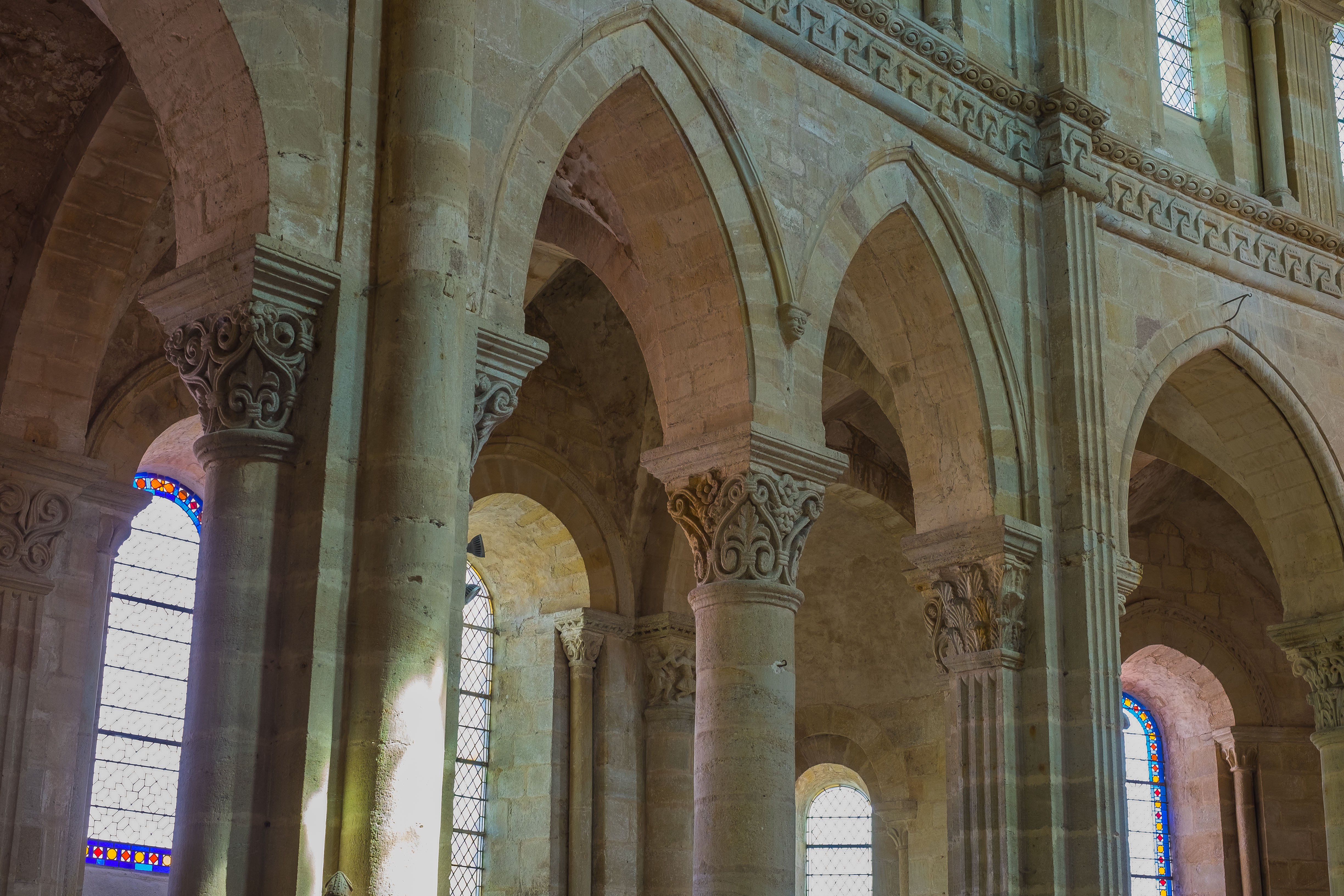
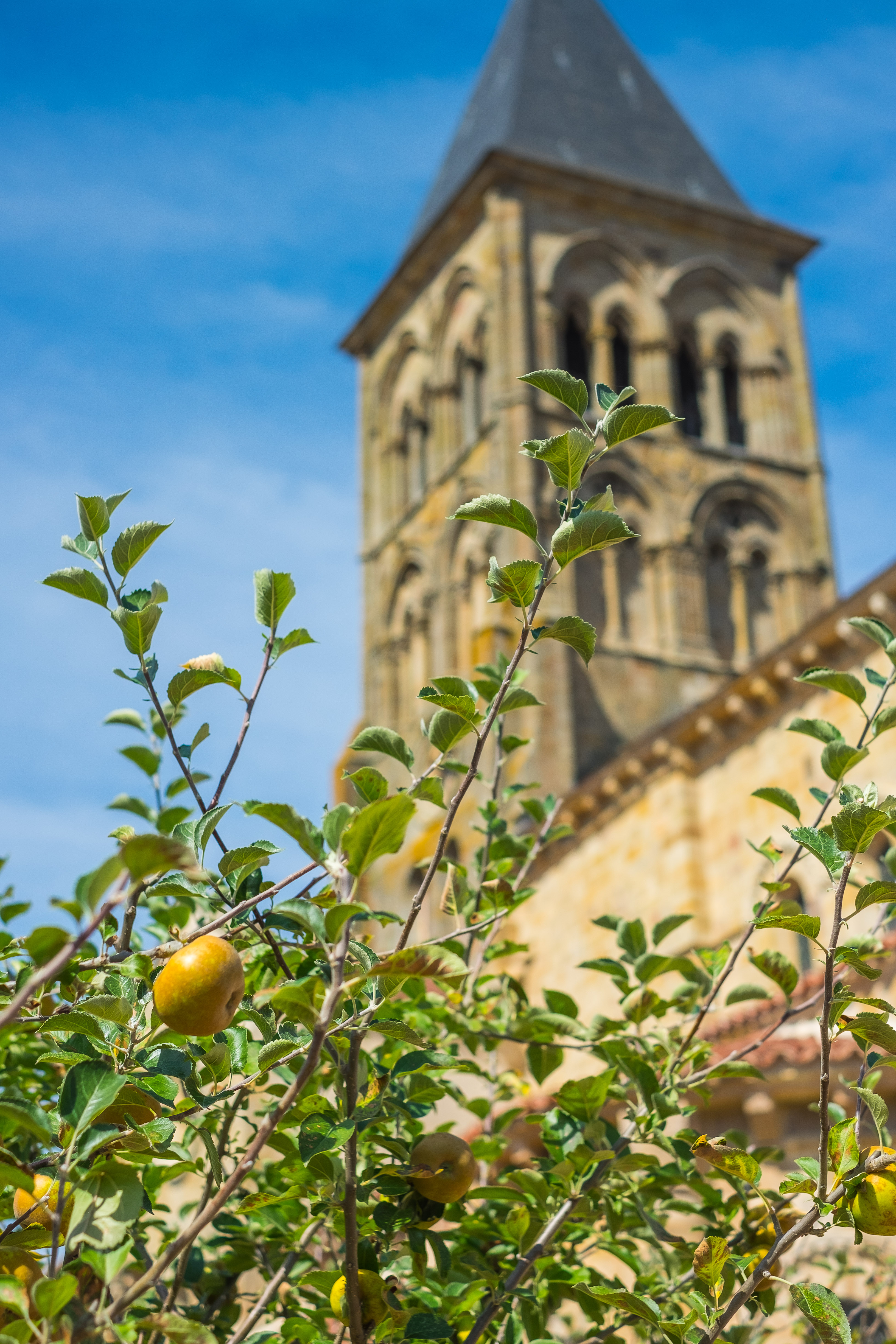
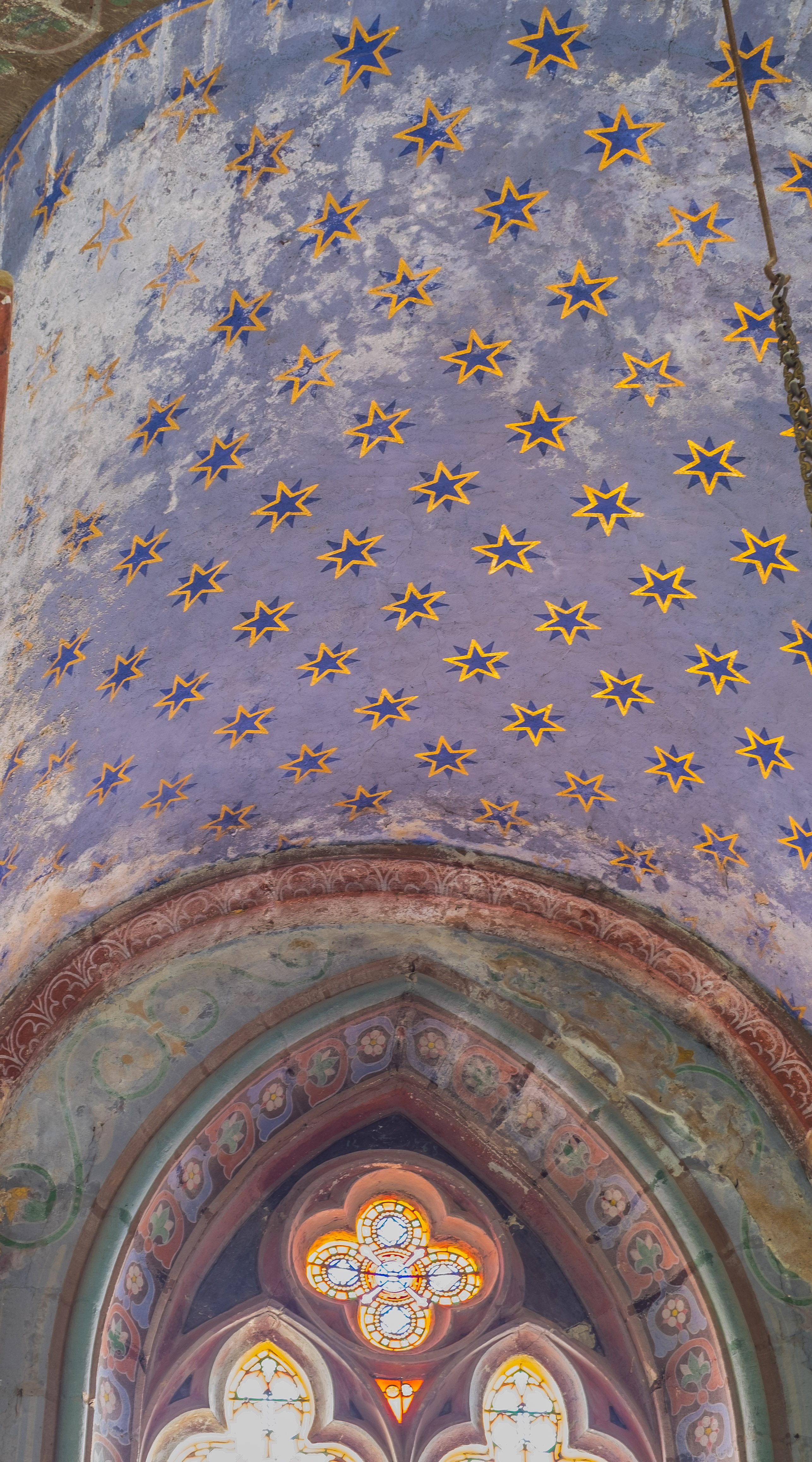
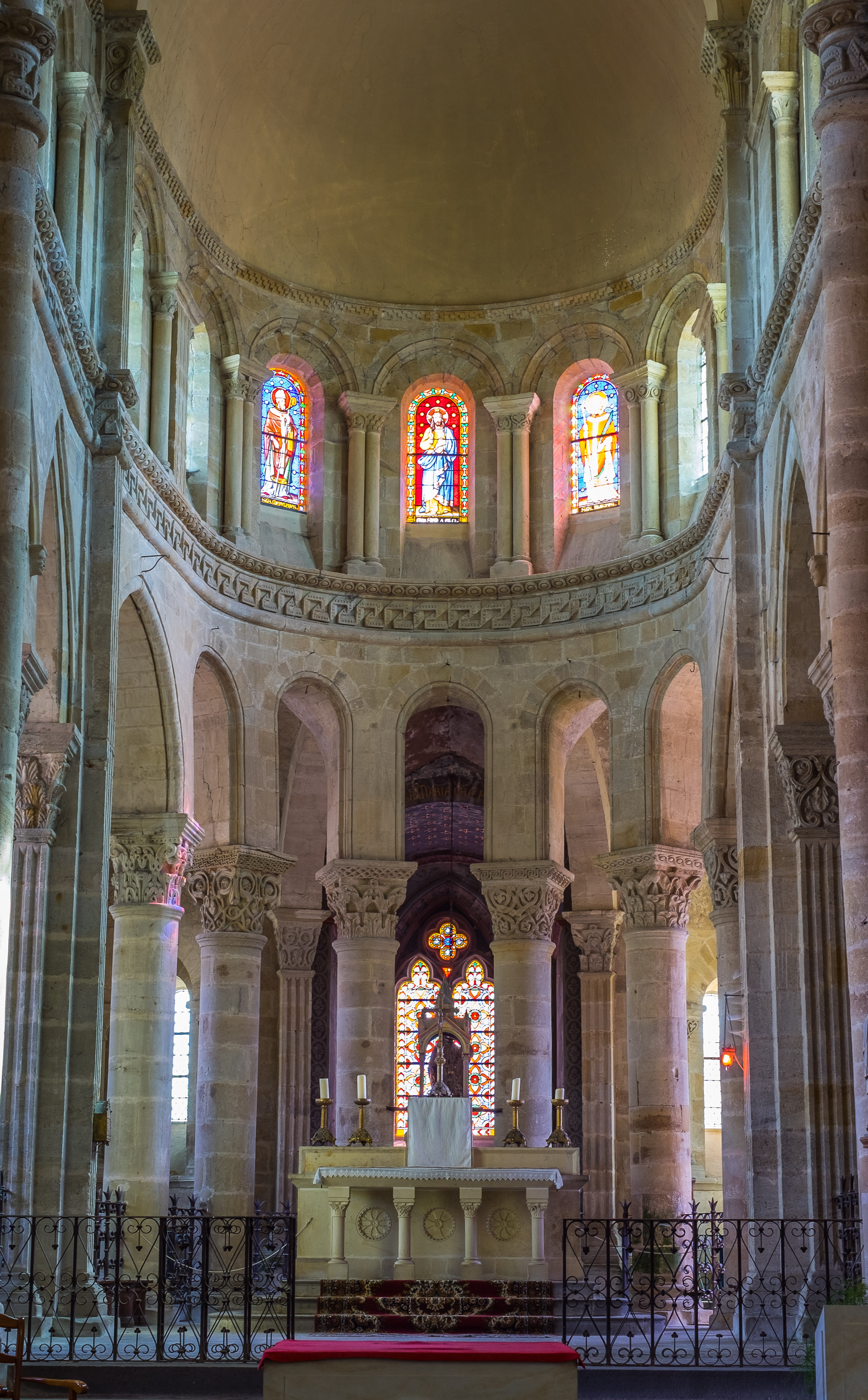
The secret of the débredinoire
Inside, the mathematically-proportioned arches, the painted walls in some of the chapels, and the intricately-carved capitals on top of the columns all make this one of the finest examples of this style in the Auvergne.
The first two times I circled the interior, I completely missed la débredinoire . (In my defense, I still didn’t know exactly what I was looking for!) On the third pass, though, I found it. Behind the altar, in the graceful round walkway of the chevet (the apse), there’s an awkwardly placed stone box that does, in fact, look like a small coffin.

The remaining relics of Saint Menulphus are vaguely visible through two little cross-shaped openings in the narrow end of the box. At the end nearer the altar there’s an opening shaped like the door to a little pizza oven.
According to the explanation posted above this débredinoire, if you put your head into the opening and pray to the saint, you can be cured of being “simple-minded”. (It is supposed to work for headaches and migraines, too.) Bredin, it turns out, is an antique Bourbon word for those who are “simple of spirit” or “a little deranged.”
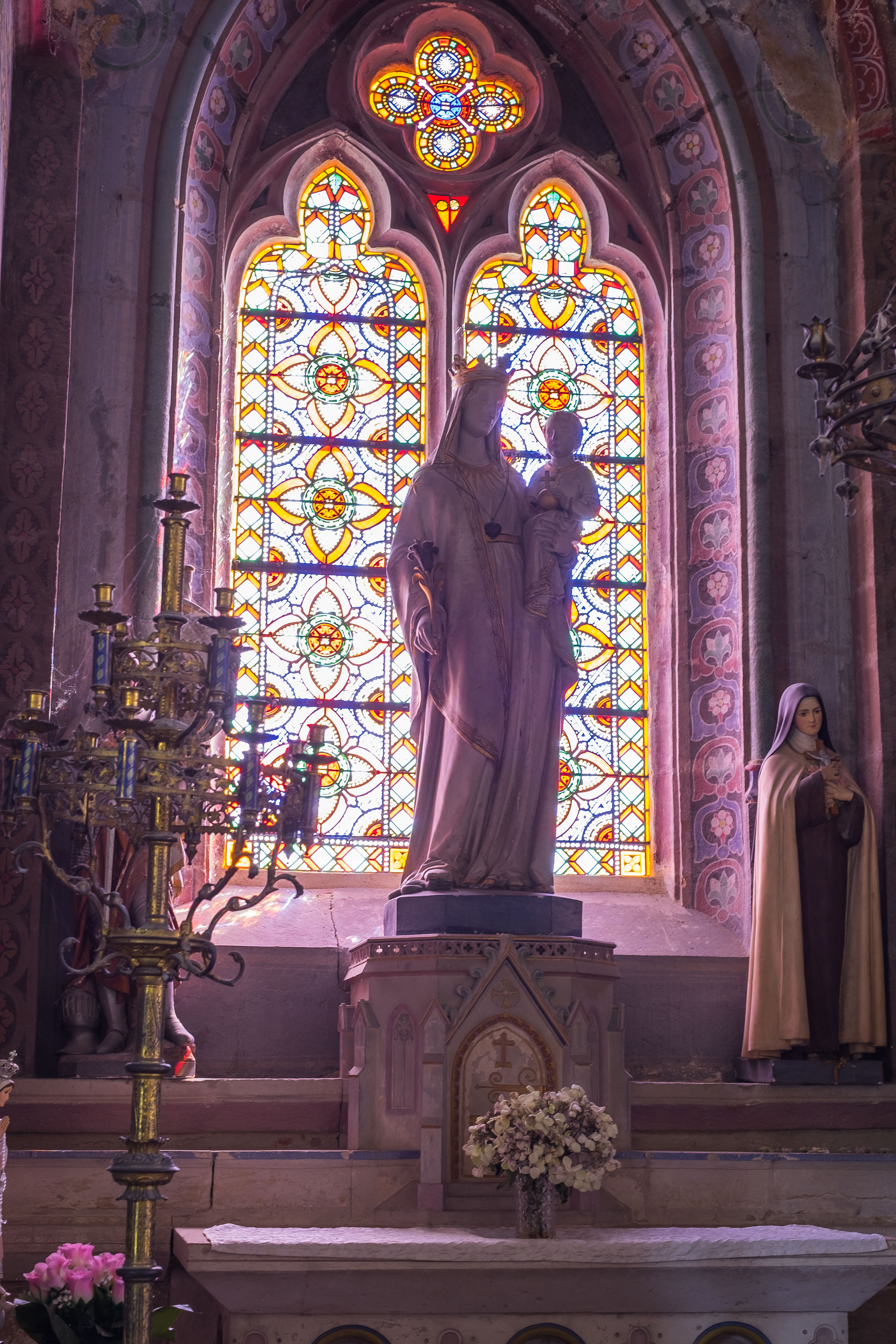
A cure for a modern problem?
Remarkably for a Catholic church, the explanation is somewhat reserved. “This is not an obligatory rite,” it says; “furthermore, avoiding all superstitious practices is recommended.” But think of the implications! If this could cure simple-mindedness in all its forms, can’t you think of a long list of people (in both the public and private domain) who should be on the first bus to Saint Menoux?
If you go, though, be careful. The legend associated with this remarkable curiosity also says you must put only your head into the stone box. If you support yourself by touching the sides of the débredinoire, you risk absorbing all the accumulated follies of all the people who came before you!
As a side note: there’s an interesting French website called “Débredinoire”, dedicated to “de-polluting your brain” by “attacking prejudice, welcoming contradiction, and listening to others and yourself.” The reliquary at St Menoux is their featured image.
What curiosities have you come across in your travels around France? Any other medieval miracles you'd like to see repeated today? Please share what you’ve seen in the Comments section below... and please share this post with someone else interested in the history and culture of France.
